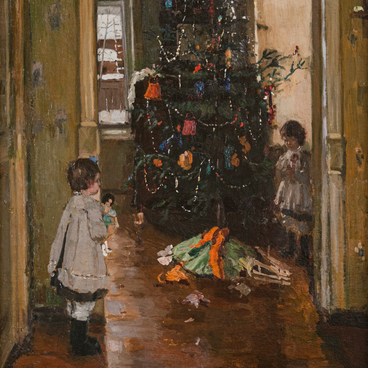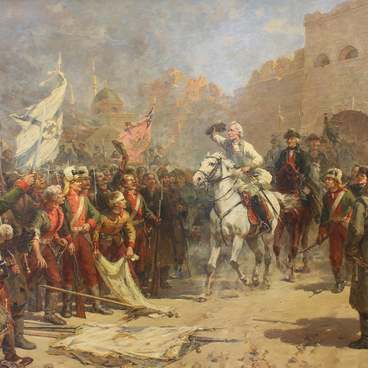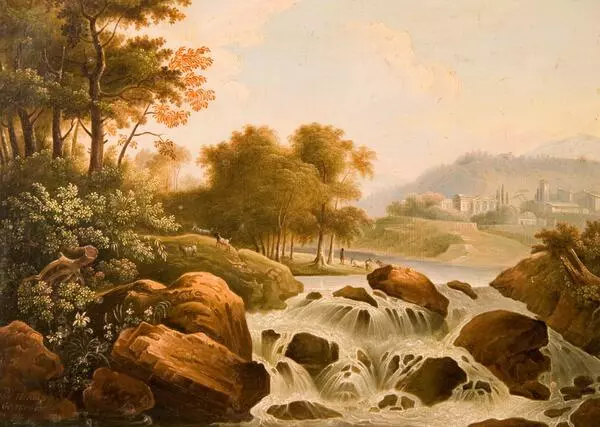Adrian Markovich Volkov was born in 1827 in the village of Chmutovo, Nizhny Novgorod Governorate, into the family of a serf peasant who served the landlady Baturina. Sometime later, Adrian and his father were granted freedom, and at the age of 14, he entered the Academy of Arts in St. Petersburg to study historical painting.
Until 1855, the future artist studied as an extern under the painter, graphic artist and professor Fyodor Antonovich Bruni. Later, he moved to the class of painting folk scenes. Since then, Adrian Volkov began to paint in this genre.
In 1861, Volkov received the title of Class Artist of the Second Degree for his painting “Hot Meals Stall in St. Petersburg”. He developed the naturalistic branch of the Russian realist school of painting of the 1860s. The key themes of Adrian Volkov’s works were everyday dramas, literary plots, the colorful and turbulent life of markets and backstreets in St. Petersburg.
The artist also drew caricatures. From 1859, to 1869, he collaborated with the magazine “Iskra”, in which his satirical drawings were printed. He also worked as the publisher of the magazine “Malyar” from 1871 to 1893.
Adrian Volkov was one of the first artists to create a canvas about the last duel of the poet Alexander Pushkin. While working on the painting, the artist consulted with the poet’s second, officer Konstantin Karlovich Danzas.
Adrian Volkov was awarded medals on numerous occasions. He was a regular participant in exhibitions of the Imperial Academy of Arts. He taught for a long time at the Drawing School of the Society for the Encouragement of Arts.
The painting “Demyan’s Fish Soup” was painted in 1856. It combined folk themes and academic techniques that emphasized the skill of an artist with a classical education of the Academy of Arts.
This work is an illustration of the climax of a fable by Ivan Andreyevich Krylov. The painting expresses the artist’s penchant for irony and the ability to grasp the character types of ordinary people. The painting depicts Adrian Volkov’s irony about the hospitality of the hosts, when the guest had to be fed at all costs.
The painting was transferred to the Alexander
Grigoriev Art and History Museum from the collection of the Rumyantsev Museum
in Moscow in 1925.





